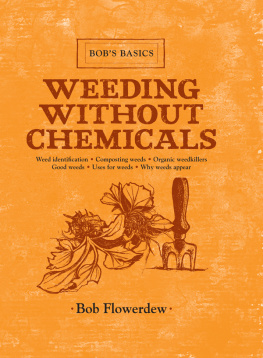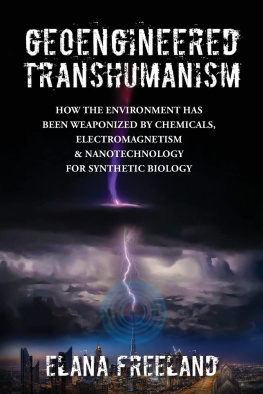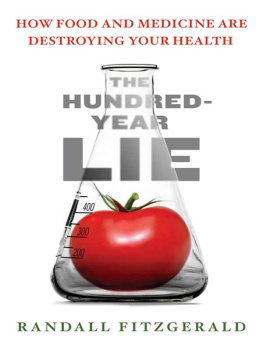The American Synthetic Organic Chemicals Industry
This book was published with the assistance of funds from Drexel University and the Authors Fund of the University of North Carolina Press.
2014 The University of North Carolina Press
All rights reserved. Set in Utopia by codeMantra, Inc.
Manufactured in the United States of America
The paper in this book meets the guidelines for permanence and durability of the Committee on Production Guidelines for Book Longevity of the Council on Library Resources. The University of North Carolina Press has been a member of the Green Press Initiative since 2003.
Cover illustration: U.S. Chemical Warfare Association cartoon, David and Goliath, c. 1925, Charles H. Herty Papers, box 98, folder 21; Manuscript, Archives, and Rare Book Library, Emory University. The original is black and white; Peter Groesbeck (Drexel University) created the color graphic.
Library of Congress Cataloging-in-Publication Data
Steen, Kathryn.
The American synthetic organic chemicals industry : war and politics, 19101930 /
Kathryn Steen.
pages cm
Includes bibliographical references and index.
ISBN 978-1-4696-1290-4 (paperback)ISBN 978-1-4696-1291-1 (ebook)
1. Chemical industryUnited StatesHistory20th century. 2. Industrial policyUnited StatesHistory20th century. 3. World War, 19141918Social aspects
United States. I. Title.
HD9651.5.S73 2014
338.4766180097309041dc23
2014003460
Portions of this book are drawn from previously published articles:
Technical Expertise and U.S. Mobilization, 19171918: High Explosives and War Gases. In Frontline and Factory: Comparative Perspectives on the Chemical Industry at War, 19141924. Edited by Roy M. MacLeod and Jeffrey A. Johnson, 103122. Dordrecht: Springer, 2006. Used with the permission of Springer Science and Business Media B.V.
Patents, Patriotism, and Skilled in the Art: USA v. The Chemical Foundation, Inc., 19231926. Isis 92 (March 2001): 91122. 2001 History of Science Society. http://www.jstor.org/stable/237328.
German Chemicals and American Politics, 19191921. In The German Chemical Industry in the Twentieth Century. Edited by John E. Lesch, 32346. Dordrecht: Kluwer Academic Publishers, 2000. Used with the permission of Springer Science and Business Media B.V.
Confiscated Commerce: American Importers of German Synthetic Organic Chemicals, 19141929. History and Technology 12 (1995): 26184. Used with the permission of Taylor and Francis. http://www.jstor.org/stable/237328.
18 17 16 15 14 5 4 3 2 1
For My Family
Contents
Figures and Tables
Figures
1.1. Deutschland submarine in the Baltimore harbor, July 1916,
2.1. Bayer Company subsidiary plant in Albany, N.Y., 1918[?],
2.2. Federal Dyestuff and Chemical Corporation, c. 1917,
2.3. Du Ponts Deepwater dyes plant, 1919,
3.1. Edgewood Arsenal mustard gas unit, c. 1918,
5.1. The Alien Property Custodian sells Bayer Company, 1918,
6.1. U.S. Chemical Warfare Association, Disarming Germany,
6.2. Why the Dye Industry Needs Protection,
6.3. National Aniline & Chemical Company advertisement, 1922,
7.1. U.S. Chemical Warfare Association, National Safety,
8.1. Selected aromatic synthetic organic chemicals (ring molecules),
8.2. Selected aliphatic synthetic organic chemicals (chain molecules),
Tables
1.1. Big Six German Dyes Firms,
1.2. U.S. Tariffs on Coal Tar Dyes, 18641913,
1.3. Production of By-Product and Beehive Coke, 18931913,
2.1. Bayer Company Dyes Sales, 19141918,
2.2. Selected Dyestuffs Used by 23 Important Cotton Manufacturers, 1913 and 1916,
3.1. Production of TNT (in Pounds) on Ordnance Department Contracts,
3.2. U.S. Ordnance Department TNT Output (in Pounds) by Firm (July 1917December 1918),
3.4. Output of Toluene (in Gallons), May 1917 to November 1918, in the United States and Canada,
3.5. American War Gas Output (in Tons), 1918,
3.6. Gas Output of Outside Plants and Edgewood Arsenal, 19171918 (in Tons),
4.1. Chemistry Ph.D.s in Germany and the United States, 19101930,
5.1. APC Actions toward Selected German-affiliated U.S. Firms,
6.1. Reparations Dyes Received through the Textile Alliance,
6.2. U.S. Tariff Rates, 19131922,
7.1. Competitive and Noncompetitive Dyes Imports, 1928,
8.1. U.S. Synthetic Organic Pharmaceuticals Output, 19221929,
8.2. U.S. Synthetic Organic Pharmaceuticals, Selected Output (in Pounds), 19221930,
8.3. U.S. Synthetic Dyes Output in Millions of Pounds and Millions of Dollars (Rounded), 19141930,
8.4. Synthetic Resins,
Acknowledgments
Perhaps readers expect the least amount of originality in a historians acknowledgments because the debts incurred and categories of creditors remain suspiciously similar across scholars, varying only in the particulars. Nonetheless, I want to thank my particulars.
This project required funding for travel to archives and for time to research and write, and I would like to thank several institutions and programs for financial support over the years. First, the Hagley Program at the University of Delaware provided the original support for my studies, and the Hagley Museum and Library additionally contributed a research grant. Through the philanthropy of Sidney M. Edelstein, the Chemical Heritage Foundation supported two important academic years of research. National Science Foundation grants (nos. 9212816, 9411742, and 0080496) were crucial to conducting research in far-flung places. I received travel and short-term research grants from the Herbert Hoover Presidential Library and Smithsonian Institution. At Drexel University, I would particularly like to acknowledge funding from Dean Donna Murasko and the College of Arts and Sciences to help bring the book to final publication. Thanks as well to the contributors to the Authors Fund of the University of North Carolina Press, which also helped to cover publication expenses. Peter Groesbeck, graphic artist at Drexel University, put his talents to work on this project with great generosity.
I visited several archives, some for an extended period, and many archivists have helped me along the way. I particularly want to thank those at the American Heritage Center, the Chemical Heritage Foundation, the Deutsches Museum, the Sidney M. Edelstein Center at the Hebrew University, Emory University, the Hagley Museum and Library, Harvard University, the Herbert Hoover Presidential Library, the National Archives and Records Administration, and the Post Street Archives. Several corporate archives allowed me access to their records: BASF, Bayer, E. Merck, and Merck & Company.
From the Hagley Program at the University of Delaware, I would first like to thank David Hounshell, my primary adviser and mentor. Thanks as well to John Beer, Anne Boylan, Reed Geiger, Peter Kolchin, and David Shearer, all of whom demonstrated that professors could metamorphose into friends. I am grateful to Chuck Grench, Paul Betz, and others at the University of North Carolina Press for assisting in the publication of this book.
Colleagues in the field have provided words of encouragement and support at important times. The cluster of scholars who study the history of the chemical industry and the like is not large, but it is an especially friendly and supportive one: Ernst Homberg, Jeffrey Johnson, J. Peter Murmann, Carsten Reinhardt, David Rhees, John Servos, John K. Smith Jr., Raymond Stokes, and Anthony Travis. I would also like to thank Steven Usselman for thoughtful and helpful readings of the manuscript; thanks as well to Colleen Dunlavy, Louis Galambos, Kelly Joyce, Robert Seidel, and anonymous reviewers for their suggestions. And my appreciation goes to several other people, academic and otherwise, who offered support and encouragement (or kindly distraction), including Regina Blaszczyk, Eric Brose, Kristine Bruland, Jessica Elfenbein, Nora Engel, Robert Feinstein, Carolyn Goldstein, Art Greenberg, Richard John, Gustavo Klurfan, Angela Lakwete, Michelle Marrese, Julie Mostov, Mary OSullivan, Nunzio Pernicone, Erik Rau, Pat Squire, Betsy and Ken Selinger, Joanne Thorvaldsen, Laura Tuennerman, and Jean Walker. A big thank you to Eleanor, Duane, Michelle, Carla, Jeff, Peter, and Billie Jo. And a salute to the regulars at the neighborhood coffeehouse, including but not limited to Jeanne, Atul, Nan, Tom, Darrell, and Rich; its not a Parisian literary cafe on the left bank of the Seine, but scholars, friends, and philosophers of all kinds abound, providing good company at the right decibel level.













